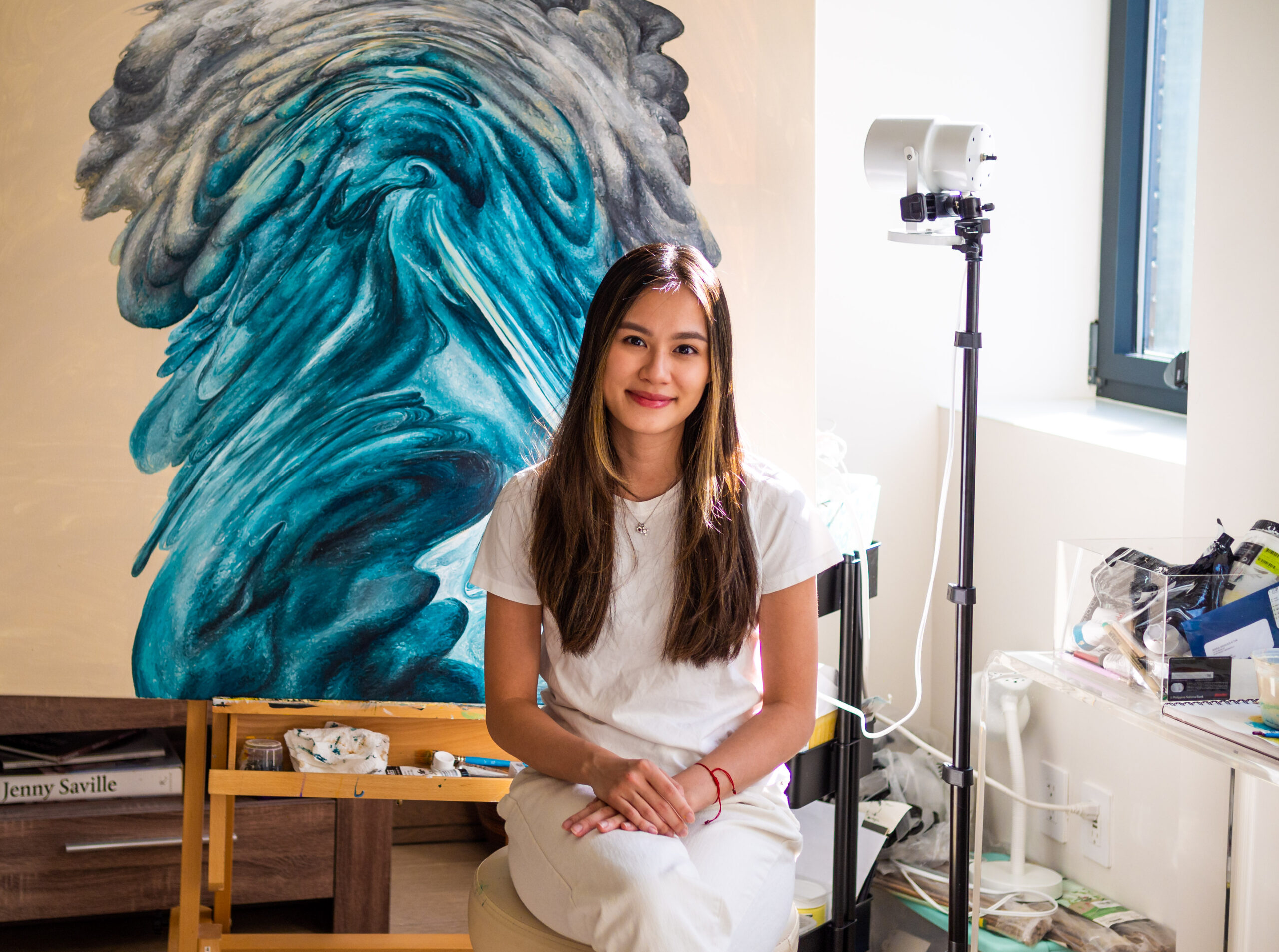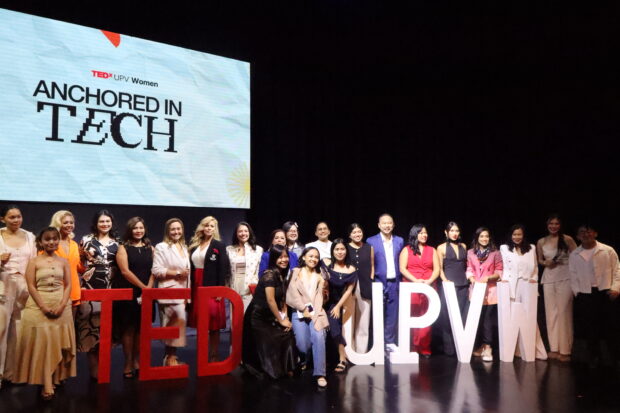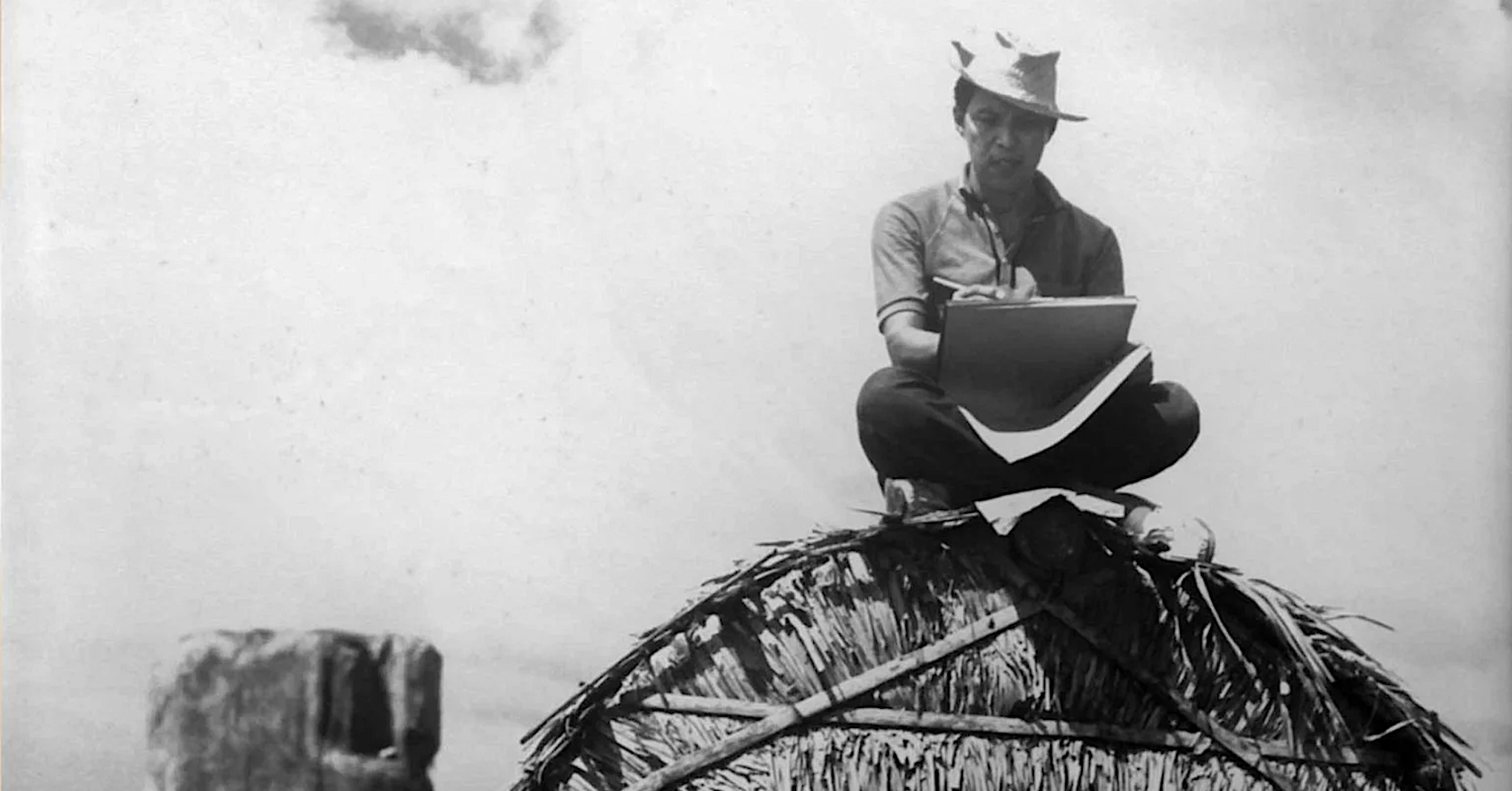The young artist pushes boundaries as she reflects on her faith, heritage, and craft
How do you identify yourself? Is it by your gender? Or, is it by your generation—like the numerous millennials vs. Gen Z observations on social media? You might introduce yourself using your nationality or your religion, but as it stands, one identifier can’t capture an individual’s complexities. No one knows this delicate balancing act better than artist Maria Angelica Tan.
Based in Manila and New York City, Tan creates large-scale acrylic paintings that explore the different facets of her spiritual practice. The young Chinese Filipina artist unveiled her latest work, the “Balance” series, at the first ICA Art Fair on Nov. 21 to 23. The four paintings in this series depict abstracted, pastel stones placed one atop the other, reminiscent of Buddhist stone stacking. Tan’s arrangements represent the tension between change and stillness.
READ: Dancing through art history: Carlos ‘Botong’ Francisco’s ‘Tinikling’ paintings and more

“The differences in my belief systems combine to have balance and harmony,” says Tan. “You can still be composed of everything and still have balance.” For Tan, her practice lets her discover new sides of herself and celebrate her personal history.
From New York, with love
After graduating from high school in Manila, Tan moved to NYC to attend Columbia University. There, she immersed herself in the college’s art studios and rigorous coursework, eventually graduating with degrees in visual arts and economics. While Columbia provided intellectual and artistic challenges, Tan credits NYC itself for expanding her worldview.
“Moving to New York allowed me to understand different languages and cultures,” Tan says. She spends time with her best friends from Brazil, Thailand, Indonesia, and the United States. Learning about their cultures solidified her understanding of her heritage and where she stands in the world. “That put a lot of things into perspective in a very, very good way.”
When asked if Tan’s relationship with her Chinese Filipina identity changed, she exclaims, “Of course, I celebrate it even more.”
Reflecting on her heritage offered a jumping-off point for Tan and her work. “Ever since I was young, I’ve always believed in God and being Catholic. Now, I realize that I also believe in Buddhist concepts, like feng shui.” Tan made it her mandate to investigate both belief systems and how they intersect in her life through her artwork.
Drawing from heritage
When Tan started painting as a teenager, she looked to British artist Jenny Saville as inspiration. Saville, an original member of the Young British Artists, paints raw and colorful portraits, notably of women. “Her work inspired my early realistic works on portraiture and capturing the Filipino female identity.”
Now, Tan brings her sensitivity toward color and texture to abstract paintings focused on spirituality. “What can I offer in my journey to the world that I can reflect on, whether I’m 20, 30, 40, 50? For me, that’s religion and spirituality.”
Tan’s “Balance” series at the ICA Art Fair features lush pastel hues and organic forms. Her earlier show at Juntta Gallery in NYC, “Mustard Seeds,” captures the collision and subsequent dance between two belief systems. In her piece, “SEEN/UNDERSTOOD?,” Tan evokes the push and pull between surface-level acknowledgement and earned vulnerability.
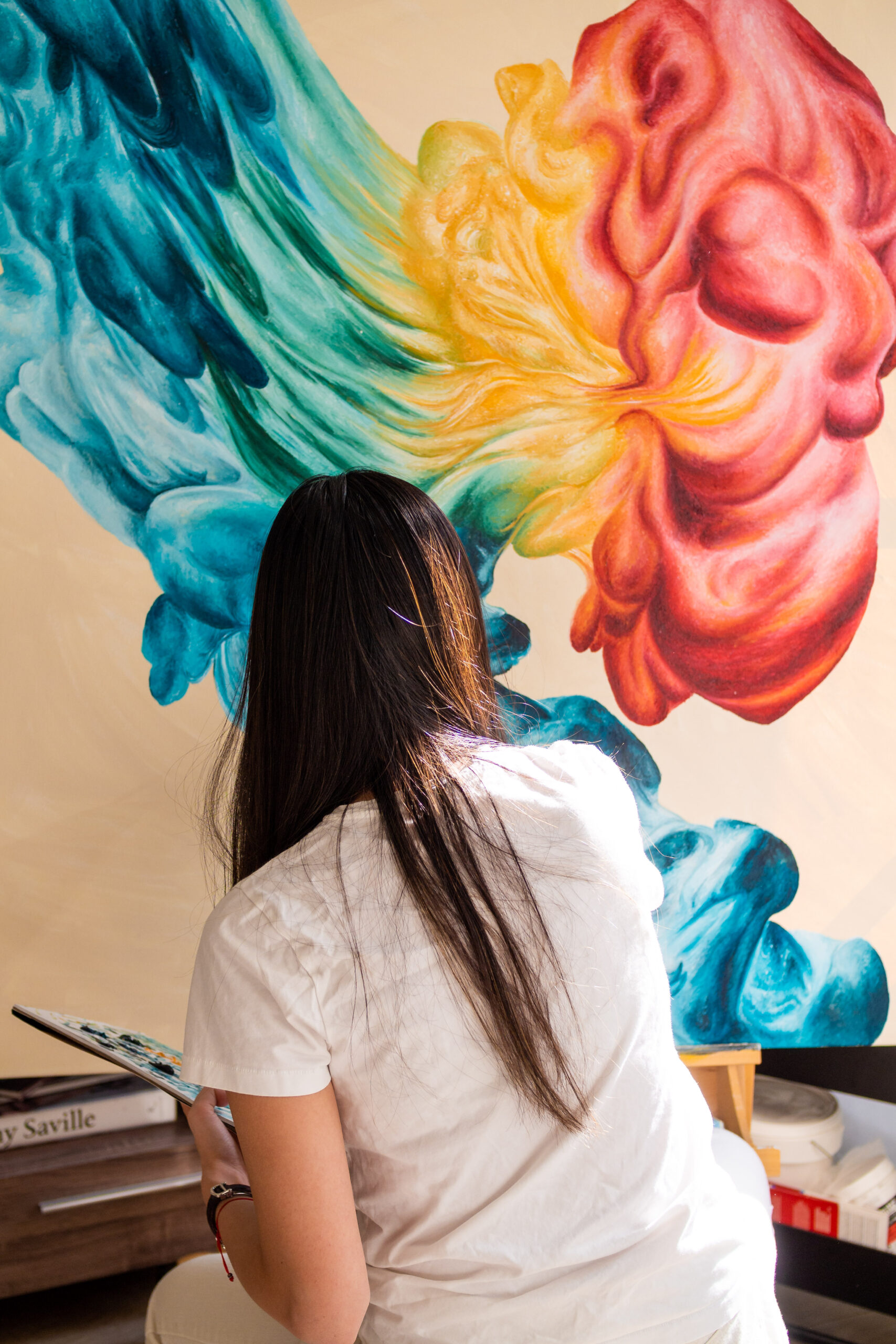
Beyond the artist’s spiritual practice, Tan’s family plays a role in her work. “An overall personal influence is my late grandma, who passed away during COVID,” she reflects. “All my works have a tone of positivity because I was inspired by how she radiated in an entire room.”
Drawing from her family gave Tan a north star for the rest of her practice. “I want someone to look at my work in the morning with a cup of coffee and feel as though it adds a positive note to their day.” These paintings ensure viewers experience the joy and light the artist feels with her family. “I’m very lucky because the people around me are very supportive.”
Chinese Filipinos in the arts
Tan is also part of a vibrant community of Chinese Filipinos in the visual arts. A number of these artists reinterpret their relationship with their faith, family, and selves.
National Artist for the Visual Arts Ang Kiukok painted figures from everyday Filipino life. Ayka Go delves into her relationship with her body in her most recent Sydney exhibit. Gallerist Mawen Ong champions established and emerging artists through BGC-based MO_Space.
The ICA Art Fair also presented Lao Lianben and Winna Go alongside Tan as featured artists. Lao is known for his gestural abstract paintings that combine techniques from the Zen Buddhist and European oil traditions. Go depicts traditional Chinese garments in large-scale oil paintings as a tribute to her diasporic identity.
Upon seeing Lao, Go, and Tan’s works at the ICA Art Fair, it’s easy to see a common thread. Tan’s inclination toward abstraction and her exploration of Buddhism share the same spirit as Lao’s contemplative approach. Both Go and Tan meditate on what it means to be part of a diaspora.
Tan loves to push the boundaries of self-exploration. “Being Chinese Filipino is not static. It can be fluid,” she reflects. Her mindset mirrors the younger generation’s malleability when it comes to self-discovery.
One step at a time
Like many young artists today, Tan is both excited and nervous about what her future holds. “I can’t see the end,” she chuckles. Navigating a career in the visual arts and creative industries at large offers many twists and turns.
Creatives today need to constantly reinvent themselves to keep up with audiences’ tastes and, admittedly, ever-shrinking attention spans. Tan understands this: “My main focus is to evolve, to make sure that each series shows another side to my spiritual journey.”
The artist also knows that she isn’t alone in exploring and experimenting with her identity. Gen Z’s coming of age is filled with tough questions on how different parts of their identity influence one another. How does being a Filipino woman shape one’s worldview? How does growing up Catholic influence views on romance?
According to Pew Research, Gen Z is the most racially and ethnically diverse generation in history. As members of Gen Z carve out individual paths in this increasingly connected world, artists look to reflect the zeitgeist in their works.
“I want to represent the younger generation who may feel a bit of a clash in different facets of themselves,” Tan explains. “That’s such a power to have nowadays because you can connect with different people.”
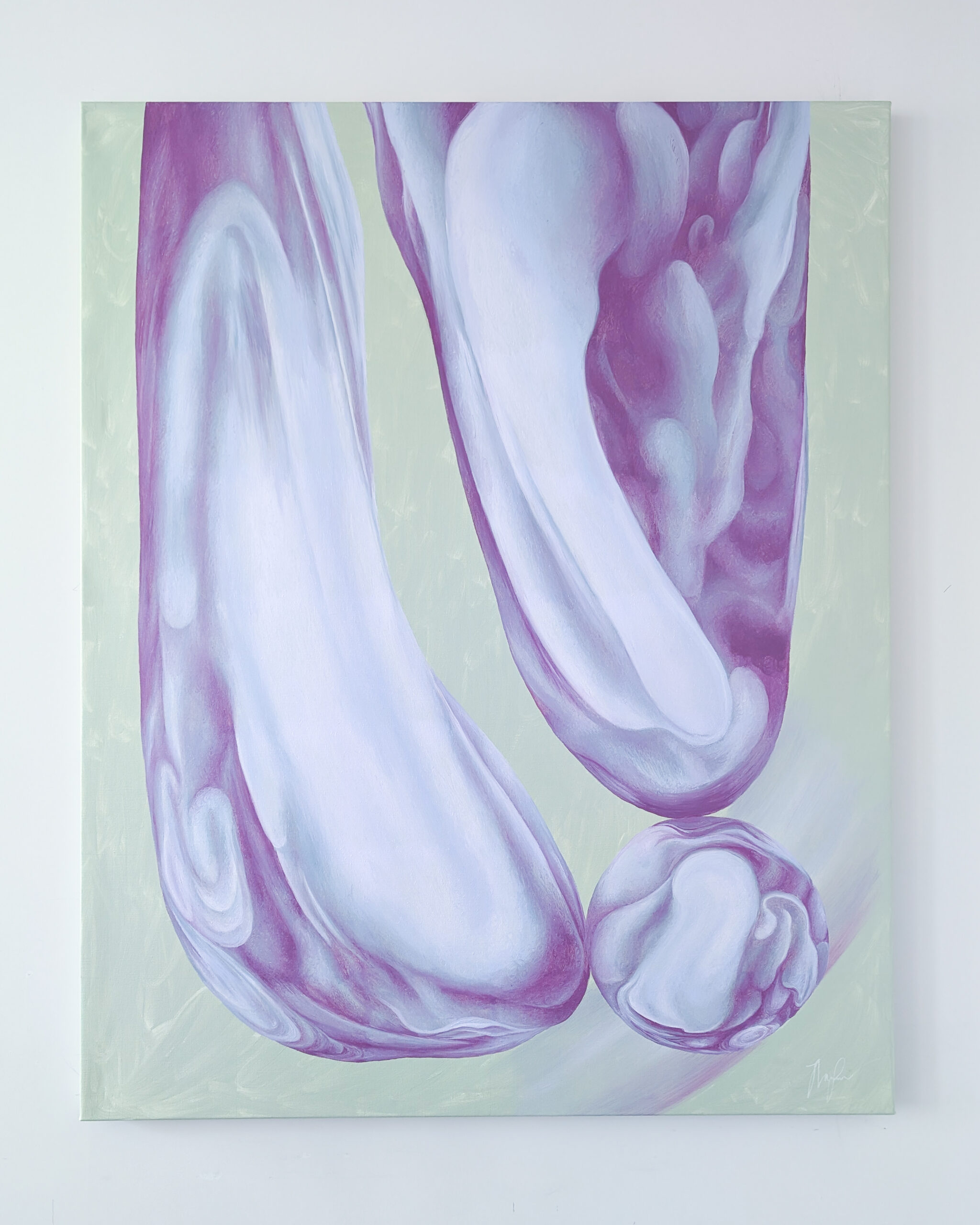
Art holds up a mirror
Beyond sharing her spirituality, Tan brings out complex, internalized emotions that can’t be put into words. “Mustard Seeds” shows what happens when two sides conflict, while “Balance” shows a successful harmonization of all these sides. Her paintings offer solace to those feeling unmoored by sweeping changes in everyday life.
The scale and illuminated quality of the “Balance” paintings are reminiscent of mirrors. In these mirrors, colors swirl, resisting clear categories or definitions. These forms and compositions are difficult to pin down—just like you. So, how do you identify yourself? Tan, only young and already wise, offers her answer: “It’s a necessary evolution to believe that change is for the better.”
Though welcoming to these internal and emotional shifts, Tan remains resolute with her craft. “There are multiple things to do, but I would pick art every day.”

